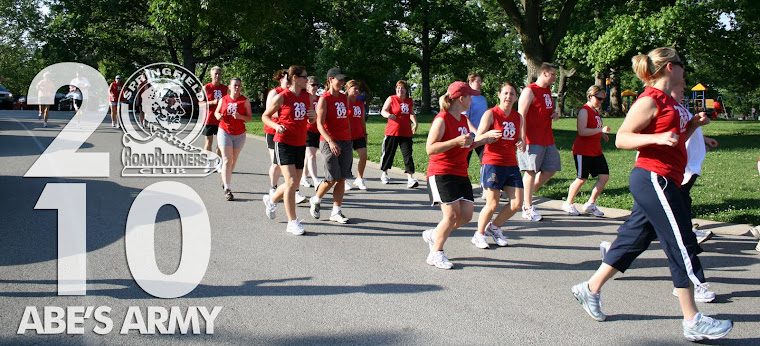The following article is from runnersworld.com.
"Ask the Running Doc" blog.
June 16, 2009
Dr. Lewis G. Maharam
Dear readers,
Last week I answered the question, What should you do if you witness a fellow runner collapsing during a marathon?
Today is a little different, in that we will talk about what you can do if you see a downed runner while on a routine training run -- without the benefit of race organizers, spectators, and a race medical team on standby.
The following advice presumes that you have no medical knowledge and do not know CPR.
-First, either dial 911 or if you are with someone, have them dial 911 while you tend to your patient. Make sure you or your friend has an accurate description of where you are. (This assumes you have a cell phone; if not, find someone who does, ASAP.)
-Assess whether the patient is conscious. Yell, “Are you OK?” and gentle tap his shoulder. If no response, assume unconsciousness. At this point, do not roll the patient onto his back; he may have injured his neck.
-Next, assess for breathing. Is the chest rising or falling? Put your ear up to the patient's mouth and listen. (If you happen to be carrying a mirror of any sort -- hey, you never know! -- you can place the mirror to the patient's mouth; if it fogs up, the patient is breathing.)
-If the patient is breathing, observe and wait with the patient, not moving him until the ambulance arrives. Be sure to wave your hands as the vehicle approaches, so they see where you are.
-If the patient is NOT breathing, you may need to perform CPR. (Note: Although I would much rather you had a proper CPR course to teach you this, in a situation like this one, doing something is better than nothing.)
Here's what to do:
-If he is face down, gently roll the patient onto his back, supporting the head and neck in line in case there is a fracture. Gently place your fist under his neck so as to raise the chin and open the airway. Place your mouth over the patient's mouth, form a good seal, and blow in till you see his chest rise. Then take your mouth off, allowing the patient's chest to fall as the breath comes out. Re-seal your mouth and do a second breath.
-Now, take your index finger and middle finger (not your thumb because it has a pulse in it) and check the side of the neck for a pulse. If you can’t feel a pulse, chest compressions are necessary.
-Place your palm mid-sternum and do 80-100 compressions a minute.
The newest recommendations say you do not need to give breaths at this point -- just keep doing chest compressions until help arrives.
-If the patient vomits, carefully roll the patient to the side, keeping the neck in line until clear of vomitus, then re-check breathing and pulse and follow the above steps every few minutes.
-If the patient is seizing, watch him until it finishes; usually such seizures are self limiting. After the seizures finish, again, check for breathing. Keeping the airway open until help arrives is always a good thing.
Nowadays, I believe everyone should know CPR. The above doesn’t really give you the best training to handle this situation.
There is a free Internet course you can do in no time at all to put your knowledge base way ahead of your peers. Here is the link: http://www.firstaidweb.com/index.php
Subscribe to:
Post Comments (Atom)

1 comment:
Does anyone know what the route is for the Womens Distance Race? I would like to run it before Saturday, thanks.
Post a Comment